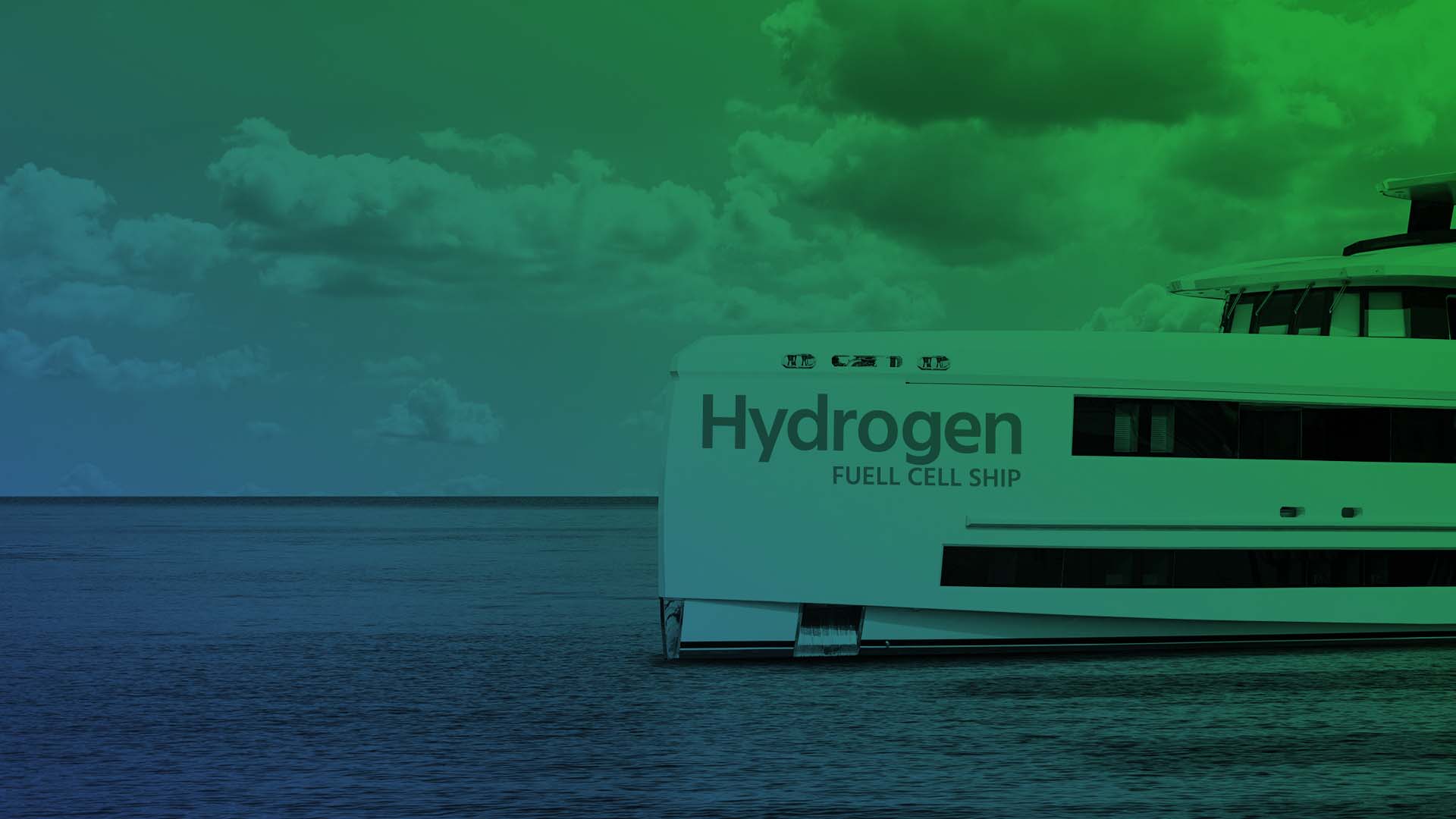Hydrogen is the most promising alternative fuel due to its favorable energy content. One kilogram of hydrogen stores three times more energy (120 MJ/kg) than its equivalents of natural gas (48 MJ/kg) and diesel (43 MJ/kg), and 330 times more energy than one kWh of battery cells (0.55 MJ/kg – lithium polymer batteries, 0.36 MJ/kg – lithium ion batteries). Therefore, it is a promising fuel for transport, but also for industry, energy and construction.
In addition to its calorific value, hydrogen is characterized by the fact that it does not emit CO during combustion and use.շ. This is fundamental to climate protection and plans to reduce emissions by 2050. Hydrogen is currently produced from natural gas or coal, which causes CO emissionsշ (9 and 20 kg/kg of hydrogen, respectively). Therefore, a new technology is needed – the production of renewable hydrogen, i.e. hydrogen that does not cause CO emissions.շ.
Annually, international shipping contributes to global warming by emitting around 980 million tonnes of COշ. The European Green Deal policy and the set goals of the International Maritime Organization (IMO) assume a reduction of greenhouse gas emissions from maritime transport by 2050 to at least 50% compared to 2008 levels. The assumed so-called decarbonization (carbon intensity), i.e. a reduction of COշ should take place in two stages: the first by 2030 with a reduction of at least 40%, and the second by 2050 with a reduction of at least 70%.
Shipping is responsible for less than 3% of global CO emissionsշ [for comparison: commercial aircraft – 7 %, passenger cars – 41%].
Decarbonising shipping is becoming a huge opportunity for shipyards and equipment manufacturers operating in Europe, while implementing the latest propulsion technologies in cooperation with the raw materials and chemical industries.
There is a need to replace environmentally unfriendly and energy-inefficient ships in order to achieve CO2 neutrality goals.շ or zero emissions, and thus meeting regulatory requirements in the field of environmental protection. As a result of the generated environmental and regulatory pressure, the shipping sector, preferring ecological or super ecological projects, will begin to dictate the pace of development of the latest innovative energy technologies.
The biggest challenge is therefore choosing the fuel of the future in maritime navigation and introducing a new generation of CO2-neutral ships.շ
New zero-emission ships powered by alternative fuels combined with energy-saving technologies and other innovative fleet modernisations will play a key role in achieving the IMO targets.
We see hydrogen as the single fuel that will get us to zero-emission shipping in the shortest time possible. However, it needs to be commercially available [production, storage, availability and supply chain] cheap enough to be used on a larger scale.
Currently, LNG has been used as a "bridge fuel", but ammonia and hydrogen are gaining importance and becoming a real possibility as the most emission-free fuel.
This direction requires urgent research and implementation work to bring the costs associated with the technology of fuel production on an industrial scale, storage, availability, bunkering infrastructure, procedures for the safe use of these fuels as well as regulatory provisions related to the technology and its application to the level of market acceptable.
The problem is not the design and construction of zero-emission ships, but who will pay for them and their fuel at such a price in order to be able to successfully provide services that are acceptable on the market.
It is therefore also necessary to create a procurement market for rebuilding the industry and saving jobs, in fleet reconstruction and modernisation programmes, using for example the EC Recovery and Resilience Facility (RRF), worth EUR 750 billion, as part of national economic recovery plans. This is related to the parallel acceleration of necessary investments in research and development of innovative green technologies and sustainable alternative fuels and their integration on ships.
The Covid-19 pandemic has shown that Europe cannot afford to be too dependent on foreign, non-EU countries in the maritime technology sector. Many new ships currently and in the near future will still be sailing in 2050, which is why their future modernization towards reducing the carbon footprint through the use of new technologies and fuels should be included in the current design as soon as possible.




